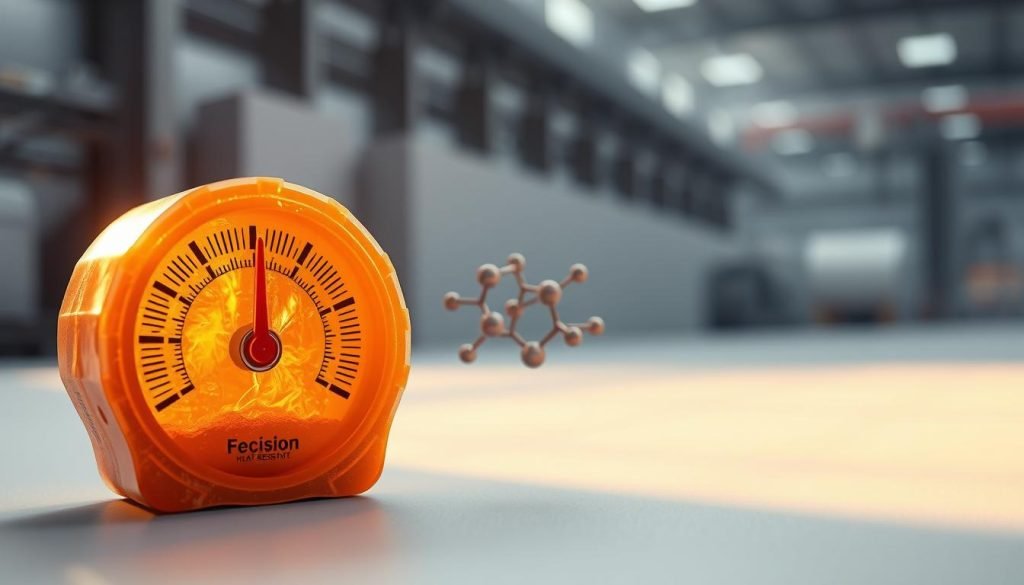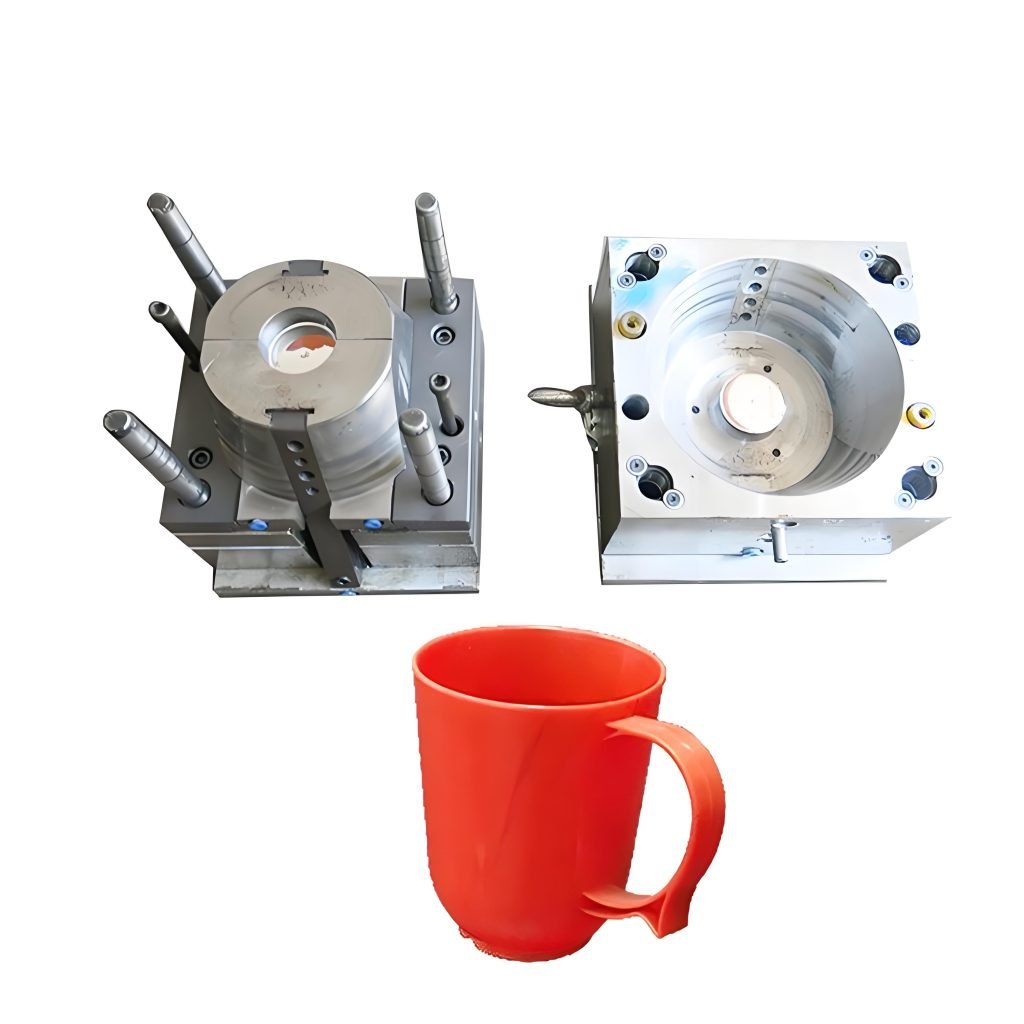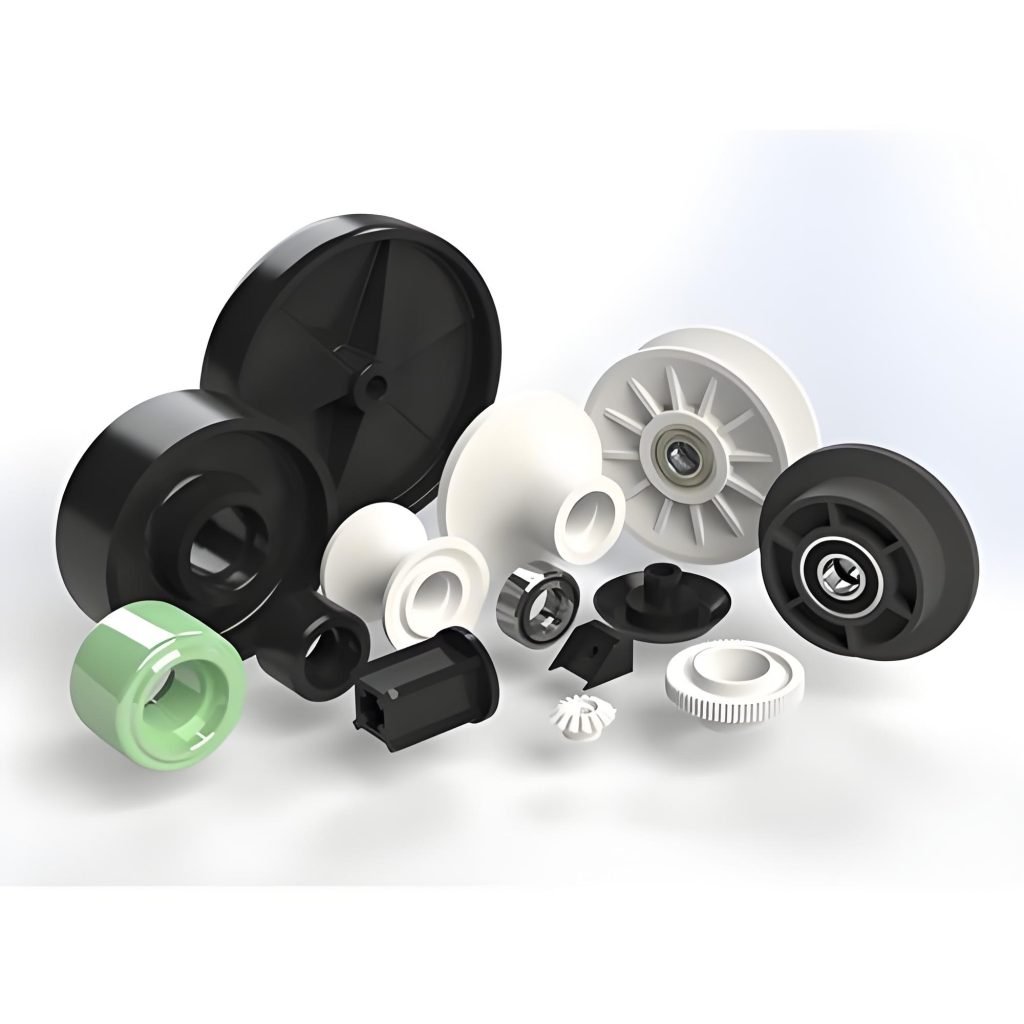You’re likely familiar with the importance of materials that can withstand high temperatures in various industries, from aerospace to medical devices. Heat-resistant plastics have become crucial in manufacturing high-performance components.
These specialized polymers maintain their structural integrity and performance characteristics when exposed to elevated temperatures, making them ideal for applications where metal components were once the norm.
As industries continue to seek alternatives that offer weight reduction, corrosion resistance, and design flexibility, understanding the properties and applications of these advanced materials is essential for engineers and product designers.
This comprehensive guide will explore the fundamental characteristics, thermal properties, types, manufacturing processes, and diverse applications of heat-resistant plastics, helping you select the right material for your specific needs.
Understanding Heat-Resistant Plastics
When it comes to high-temperature applications, understanding heat-resistant plastics is crucial for engineers and manufacturers alike. Heat-resistant plastics are specialized polymers designed to maintain their structural integrity, dimensional stability, and mechanical properties when exposed to elevated temperatures for extended periods.
Definition and Basic Characteristics
These materials are characterized by their high glass transition temperatures, melting points, and thermal decomposition thresholds. The basic characteristics of heat-resistant plastics include exceptional thermal stability, good chemical resistance, mechanical strength, and dimensional stability even when subjected to thermal cycling. As a result, they are ideal for use in demanding environments.
Why Heat Resistance Matters in Plastic Materials
Heat resistance matters significantly in plastic materials because it directly impacts product reliability, safety, and longevity. Without adequate heat resistance, plastic components can experience deformation, warping, or chemical breakdown, leading to premature failure. The growing demand for lightweight alternatives to metal in high-temperature applications has driven the development of advanced heat-resistant plastic formulations across various industries.
Thermal Properties of Heat-Resistant Plastics
When it comes to applications involving high temperatures, the thermal properties of plastics are a critical consideration for engineers and designers. You need to understand these properties to ensure that the materials you choose can withstand the operating conditions.
Continuous Service Temperature (CST)

Continuous Service Temperature (CST) is a crucial thermal property that indicates the maximum temperature at which a plastic can operate continuously for extended periods without significant degradation of its mechanical properties. High-performance polymers like PEEK have a maximum CST of 260°C. Other materials such as PPS (220°C CST), PPSU (210°C CST), and PEI (170°C CST) also offer excellent thermal resistance.
Melting Points and Heat Deflection
Melting points provide insight into the upper temperature limit of a thermoplastic material. While practical applications require operating below this threshold, understanding melting points is crucial. Heat Deflection Temperature (HDT) measures the temperature at which a standardized test specimen deforms under a specified load, offering guidance for applications where dimensional stability is crucial.
Chemical Resistance at High Temperatures
Chemical resistance becomes particularly important at elevated temperatures, as many plastics that resist chemicals at room temperature may become vulnerable when heated. Understanding this property is essential for applications in harsh environments, where both chemical exposure and high temperatures are factors.
By understanding these thermal properties, you can select materials that maintain their integrity and performance throughout the expected service life of a component, even under demanding thermal conditions.
Types of Heat Resistant Plastics
The world of heat-resistant plastics is diverse, offering a range of materials for different uses. These plastics are crucial in various industries where high temperatures are a norm, and the right material can make a significant difference in performance and durability.
Premium Temperature-Resistant Plastics
Premium temperature-resistant plastics are designed for the most demanding applications. They offer exceptional thermal stability, mechanical properties, and chemical resistance.
PEEK (Polyether Ether Ketone)
PEEK stands as the gold standard among premium temperature-resistant plastics. With its exceptional thermal stability (Continuous Service Temperature up to 260°C) and outstanding mechanical properties, PEEK is ideal for aerospace, medical, and oil & gas applications. Its excellent chemical resistance further enhances its suitability for harsh environments.
PPS (Polyphenylene Sulfide) and PPSU (Polyphenylsulfone)
PPS and PPSU offer excellent thermal resistance with Continuous Service Temperatures of 220°C and 210°C, respectively. They are combined with good UV and chemical resistance, making them suitable for outdoor applications and electrical components.
PEI (Polyetherimide)
PEI, often known by the brand name Ultem, provides a slightly more affordable alternative to PEEK. It still offers impressive heat resistance (Continuous Service Temperature of 170°C), good strength, ductility, and chemical resistance, making it suitable for medical and automotive applications.
Affordable Temperature-Resistant Plastics
For applications where the extreme temperature resistance of premium plastics is not required, affordable temperature-resistant plastics offer a cost-effective solution without compromising on performance.
PC (Polycarbonate)
Polycarbonate offers a Continuous Service Temperature of 140°C along with high-quality appearance and good impact resistance. It is popular for transparent parts and automotive components.
PA66 (Nylon66)
PA66 provides good mechanical strength and rigidity with a Continuous Service Temperature of 140°C. It is suitable for under-the-hood automotive components, and glass-filled variants offer even higher temperature resistance.
POM (Polyoxymethylene)
POM, or acetal, delivers good stiffness and low friction with a Continuous Service Temperature of 105°C. It is ideal for engineering parts like gears and fasteners that require dimensional stability at moderate temperatures.
Manufacturing Processes for Heat Resistant Plastics
To produce heat-resistant plastics, manufacturers employ specialized equipment and techniques. The manufacturing process for these high-performance materials is critical to their performance and reliability.
Injection Molding Techniques

Injection molding is a widely used process for producing heat-resistant plastic parts. It offers excellent dimensional accuracy and complex geometries, making it ideal for both prototyping and high-volume production. When injection molding high-temperature plastics like PEEK, processing temperatures can exceed 400°C in the barrel, with mold temperatures around 160°C.
The injection molding process involves drying the material thoroughly before processing, using appropriate gate designs, and controlling cooling rates to minimize internal stresses.
Extrusion and Other Manufacturing Methods
Extrusion is another important manufacturing method for heat-resistant plastics, particularly for producing continuous profiles, tubes, sheets, and films. Other methods include compression molding, blow molding, and rotational molding, each offering specific advantages for certain applications.
Advanced manufacturing techniques like 3D printing with high-performance materials are increasingly being used for rapid prototyping and small-batch production of heat-resistant plastic components.
Manufacturing Considerations and Challenges
Manufacturing heat-resistant plastics requires careful planning and execution to overcome potential challenges. The process involves several key considerations that impact the quality and performance of the final product.
Processing Temperature Requirements
One of the most significant considerations is the processing temperature. Heat-resistant plastics typically require much higher processing temperatures than conventional plastics, necessitating specialized equipment with enhanced heating capabilities. For instance, ultra-high-temperature materials like PEEK demand thorough purging of the equipment to prevent contamination and degradation of subsequent materials.
Mold Design Considerations
Mold design is another critical factor. To accommodate higher mold temperatures, designers must carefully plan gate locations and sizes to prevent premature freezing. Proper venting is also essential to allow gases to escape during the molding process, ensuring that the mold cavity is filled completely.
Common Manufacturing Issues and Solutions
Common issues when working with heat-resistant plastics include material degradation, incomplete filling of mold cavities, and warpage. Solutions involve optimizing process parameters, modifying mold designs, and selecting the appropriate grade of material. Working with experienced manufacturers who specialize in high-temperature plastics can help overcome these challenges and ensure consistent, high-quality parts.
Applications in High-Temperature Environments

The versatility of heat-resistant plastics makes them ideal for high-temperature environments. These advanced materials are used across various industries where components are subjected to extreme thermal conditions.
Aerospace and Automotive
In aerospace and automotive industries, heat-resistant plastics like PEEK and PEI are used for components near engines and exhaust systems, offering weight reduction and performance.
Medical Applications
Medical applications leverage the biocompatibility of heat-resistant plastics, with PEEK being used for surgical implants and dental instruments due to its thermal stability.
Electronics and Electrical
Electronics benefit from heat-resistant plastics’ electrical insulation properties and thermal resistance, enabling smaller, reliable devices.
Oil & Gas and Industrial
In oil & gas, these plastics withstand downhole environments, including high temperatures and corrosive fluids, making them ideal for seals and valve components.
Conclusion
As we’ve explored throughout this article, heat-resistant plastics are revolutionizing various industries with their exceptional properties. These advanced materials offer a unique combination of thermal stability, mechanical strength, and chemical resistance, making them the optimal choice for high-temperature applications. Whether you’re developing products for extreme environments or need components that offer reliable performance under moderate thermal stress, heat-resistant plastics provide solutions that are often lighter, more cost-effective, and also excellent in terms of design flexibility. For assistance in selecting the right heat-resistant plastic, contact our team of materials experts.




